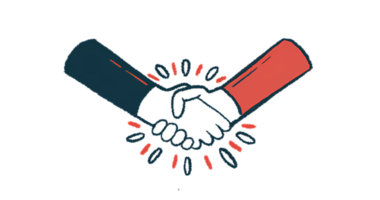Making Healthy Connections and Sharing Healing Experiences

In the book “Talking to Strangers,” author Malcolm Gladwell posits that we are lousy at knowing the intent of strangers. We have no better success than chance in determining whether someone is lying or telling the truth.
One explanation is called truth default theory. Simply stated, when meeting strangers, we default to our beliefs about people. These beliefs shape how we interpret all the available cues gathered while talking to a stranger. This process of “sizing up” is how we arrive at our truth default position when talking to others.
But research suggests that most of us — even those well-trained in human communication — are not particularly good at accurately reading people. Yet, experiencing that special connected feeling when meeting someone for the first time is the muse for poets, authors, and songwriters alike.
In my research on empathy, I looked at this problem of making an accurate connection that moves beyond the initial truth default position established by belief bias. I found that there is a certain type of relationship in which the accuracy of sensing the other is improved over the truth default position. I call this the “healing relationship.” Practicing healers, and those who have experienced healing with these healers, describe the healing relationship in sacred terms.
The problem with science-based normative statistics, like the research on knowing if someone is lying, is that it gives you a snapshot of the general population while simultaneously discarding the outliers. Mystics and healers often are considered outliers of society. It would be interesting to see how they would fare in determining when someone is lying.
I describe empathy as having the following characteristics: reception, reflection, mutuality, proper intent, and developmental level. Within the healing relationship, the intent of empathy is solely to promote the well-being of the other. It is a process of receiving sensory information about the other, reflecting that back accurately, and arriving at mutual understanding through this reception-reflection process.
My ability to empathize is based on my skill in using empathy, which can be described as a developmental level. Those who practice empathy at a high developmental level understand the concept differently than those who practice at the beginning level. While teaching graduate-level counselors, I saw this often. Beginning counselors often refer to their truth default position when meeting patients for the first time, supporting Gladwell’s argument.
Despite how poorly we often fare when reading strangers, the possibility always exists that we can make a connection. When we meet another person for the first time, it’s possible to let go of the truth default position and enter a meaningful healing relationship. We can’t do this with everyone. There are some people with whom we just can’t connect, and that’s OK. What’s exciting is that we are capable of a healing connection, setting aside our biases, deeply listening to one another, and entering the compassion space that opens the door to a shared human experience of healing.
There are two ways to look at the idea of a shared human experience. First is to look at shared context — two people witnessing the same thing, like the events of 9/11 or the JFK assassination. The two people who witnessed the same event have a shared context, and in that way, a shared human experience. This does not mean they feel or think about the event in the same way.
The second way to look at shared human experience is to identify empathy as a shared inner experience — two people sharing the feelings and sensations of the moment. Skilled empathy practitioners and the patients who have sat with them describe this process of shared inner experience. The possibility of a healing connection exists even though we often misjudge reading people.
Maybe the truth default position exists because we hope our talking with strangers will reveal the possibility of making a meaningful connection. It is this possibility that promotes growth and the development of relationships, family, and society more than the efforts to guard against problems caused by the occasional liar.
For six years, I ran a compassion questionnaire on the internet. It had two questions about the life-changing impact of relationships. One addressed the impact of a compassionate relationship, while the other addressed the impact of a harmful relationship.
Of approximately 600 respondents, over 90% rated the life impact of the compassionate relationship higher than the impact of the harmful relationship. The responses support the importance of the healing relationship, not only for experiencing the healing moment, but also for our well-being over a lifetime.
Making healthy connections makes our lives better. Knowing that a shared healing experience is possible makes living with a chronic disease like Parkinson’s, even during stressful times, easier.
***
Note: Parkinson’s News Today is strictly a news and information website about the disease. It does not provide medical advice, diagnosis or treatment. This content is not intended to be a substitute for professional medical advice, diagnosis, or treatment. Always seek the advice of your physician or another qualified health provider with any questions you may have regarding a medical condition. Never disregard professional medical advice or delay in seeking it because of something you have read on this website. The opinions expressed in this column are not those of Parkinson’s News Today or its parent company, Bionews Services, and are intended to spark discussion about issues pertaining to Parkinson’s disease.







Leave a comment
Fill in the required fields to post. Your email address will not be published.